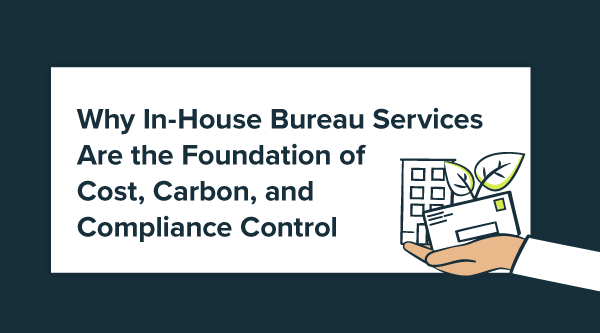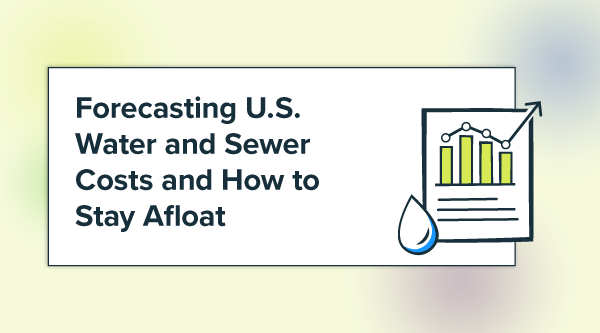Perhaps you’ve heard it before, or read it in a news headline. ”Emissions need to be reduced by 45% by 2030, and reach net zero by 2050.”
The majority of corporations, organizations, and administrations in the U.S. are not making the necessary emissions reductions to meet these crucial deadlines. The clock is running out, and at this point, revolutionary, large-scale changes are mandatory in order to have any hope of meeting these lofty emissions-severing goals.
Finding solutions is a daunting task, given that reducing carbon footprint at the national level is a complex and interdisciplinary discussion, impacting everyone from individuals to the largest of enterprises.
How can such radical alterations be made at the pace required by swiftly rising global temperatures? The answer lies in deep decarbonization.
What is Deep Decarbonization?
Governments, organizations, and companies have long made attempts at decarbonization, but in most cases it has proven to be slow, cumbersome, and incremental at best. The resulting changes in emissions have been insignificant, and it’s clear that the solution to the climate crisis requires reaching much further, introducing a myriad of multifaceted, interdisciplinary solutions.
Deep decarbonization is defined as “transformative changes across various sectors of the economy, including energy, transportation, industry, agriculture, and buildings to substantially mitigate climate change.” Communication and collaboration between these various sectors toward a common goal is paramount if there is to be any hope of reaching the necessary carbon emissions reduction goals outlined by the Paris Agreement.
There’s one number in particular ruling the hearts and minds of climate scientists, global political leaders, and industry executives: 1.5°C.
It’s a looming benchmark, a dread-inducing symbol of the harsh reality that will come to pass, should the average global temperature increase by that much. And now in 2024, we are dangerously close.
2023 was already the single warmest year on record, with 9 out of 12 months exceeding the 1.5°C temperature increase from pre-1900s records, and the months of June through August clocking in as the warmest period of time in known history. Although an average of 1.5°C increase would need to be present over several years to signal the alarm set by the Paris Agreement, this is the first year where such a consistent breach has occurred, and it could be the beginning of a dire trend.
The most immediate and tangible threats to society at large are the striking increase of extreme, lethal weather events like hurricanes, flooding, stifling heat waves, and wildfires, as well as the rise of sea levels catalyzed by the alarming pace of sea-ice melt.
July of 2023 saw the lowest amount of sea-ice in Antarctica ever observed. There are over 4 million people in the U.S. alone that would be displaced by heightened sea levels should the 1.5°C average increase be realized. Each year, the situation becomes more serious, improvements fall short of benchmarks, and the required changes and implementations to slow climate change become more urgent.
So why haven’t more business executives and politicians seemed to catch on?
Deep Decarbonization vs Moderate Efforts
It’s not that decarbonization efforts or climate policies are uncommon. In fact, more than half (55%) of companies surveyed stated that they had outlined specific emissions reduction goals in the interest of addressing climate change. The issue, rather, lies in the fact that moderate and incremental approaches to finding climate solutions are not enough given the severity of climate change. While commonly viewed as “better than doing nothing,” incremental progress is, unfortunately, hurting more than it is helping.
Incremental policy advocates tend to introduce lofty and seemingly robust climate goals which convince stakeholders that bold changes are being enacted that will have a broad impact. Meanwhile, they introduce lackluster measures like economic incentive programs that only moderately promote decarbonization. Without real accountability present, there are no reasons to believe that the lofty goals weren’t achieved.
Stakeholders concerned with good governance experience a false sense of satisfaction and little urgency to increase efforts. These sorts of moderate measures may have been sufficient if more businesses addressed the issue collectively 10-20 years ago, but given the current state of climate emergency, it’s become imperative to implement stronger, more drastic, and widespread tactics to realize meaningful change.
As mentioned, it’s important to recognize that many entities do have some strategies in place for decarbonization. Typical areas of interest include energy efficiency of facilities, electrification and the “greening of the grid,” utilizing low carbon fuels, and point-source CO2 capture. A company or organization will typically invest in one method, or the method that requires the least time and money expenditure, while ignoring the numerous other areas that require serious attention. This leads to a relatively marginal overall impact on emissions as a whole.
The carbon emissions resulting from a company or organization’s activities are divided into three possible categories: Scope 1, Scope 2, and Scope 3. Each category has its own challenges and unique strategies of management. Scope 1 is defined as emissions directly caused by an entity’s operations, such as exhaust from company vehicles or equipment. Scope 2 carbon emissions refer to the CO2 generated as a result of producing the energy that is consumed by an entity or business as it conducts operations. Last, and certainly not least, Scope 3 defines emissions that are either a result of supply to a company or organization, or of the consumer using their product, essentially emissions generated up and downstream in the value chain.
Scope 1 and 2 are by far and away the most common aspects of emissions that are addressed, given that they are much easier to quantify and deal with inside of one institution. For example, executives can manage where they source their fuel for operations, or whether they want to implement renewable energy sources like solar panels as opposed to conventional coal. However, that is precisely where conventional decarbonization strategies begin to fail, as Scope 3 emissions are often left entirely unaddressed. They are difficult to quantify given that they blend over sector lines, yet they account for a significant portion of the total. The solution to the emissions problem is certainly not singular, but it is often treated as such, due to an inability to take a comprehensive approach.
The Urgency of Deep Decarbonization
Because moderate and incremental efforts consistently fall short, it is blatantly clear that the current rate of decarbonization achieved by businesses is insufficient to reach the required reductions in carbon emissions. But deep decarbonization offers hope for the radical change that is needed across the various spheres of energy, transportation, industry, agriculture, and buildings. Deep decarbonization reaches into each of these areas simultaneously, transforming multiple sectors at once. It involves more ambitious analysis, technological advances, policy changes, and accountability across these various institutions.
Deep decarbonization also focuses on coordinating data and solutions that cover the entire supply chain and life cycle of a product, from governing the transportation of raw materials, sourcing renewable sources of energy, to the very point of consumption and end-of-life. Rather than, for example, simply incentivizing the use of renewable energy (moderate approach), deep decarbonization would suggest a union between green, technological advances and industrial policy changes to mandate an effective system-wide change that has a significant impact on harmful emissions.
Aside from addressing the apparent, dire state of our planet’s climate that moderate efforts ignore, deep decarbonization also maintains the best interests of economic health in the long run. The truth is, fossil fuels are exhaustible. They will eventually become scarce, more expensive, and unreliable before they are depleted entirely. The transformational shift of society away from fossil fuels offered by deep decarbonization offers more reliable and secure non-carbon solutions.
In a world where consumers, stakeholders, and world leaders alike are becoming increasingly climate-aware, deep decarbonization is not only critical for the health and survival of the planet, but also the long-term viability of companies themselves, and the entire economy. Stakeholders understand that sustainability standards are quickly becoming indicative of how a company will perform in the long run. Given that addressing climate change is at the top of the list of sustainability stipulations as an issue with serious environmental and social consequences, investors will adjust their funds accordingly. Deep decarbonization makes saving the climate synonymous with maintaining a long-term, economically viable advantage.
A common argument is that even though it may not be the most effective, incremental changes in terms of reducing emissions are still impactful and relevant. But this is the mentality that traps institutions within the confines of moderate approaches, never to change or grow. If businesses and other large-scale entities are led to believe that, “a little goes a long way,” then the actual transformational requirements necessary will never fully be realized. At a time like this, moderation hurts far more than it helps, leading policymakers to be complacent with emissions reduction strategies.
An example of this phenomenon is the implementation and sale of Renewable Energy Credits (RECs). These are administered when a company sources electricity from a renewable source rather than a carbon-based one. An REC is designed to be a powerful incentive to encourage businesses to invest in more sustainable energy options. The funds from the purchase of an REC are then directed into the installation of more renewable energy infrastructure. In theory, this provides a feasible way for companies to manage their Scope 2 emissions. However, while this strategy does encourage the renewable energy market to grow, it doesn’t require or entail a reduction in carbon emissions. Thus, companies are free to just as easily maintain (and even expand upon) their same carbon emission levels while also incorporating minimal renewable energy. On paper, it seems to offer a relevant solution. In practice, it doesn’t bring us any closer to meeting those 2050 goals as a result.
In a somewhat similar method, governments will commonly assign a price to carbon emissions, or a monetary cost to industries who utilize fossil fuels. The vision is that this “carbon tax” will increase gradually year after year, eventually becoming too costly for industries to manage, forcing them to adopt renewable sources of energy and fuel. It appears like a logical and direct manner to deal with climate issues. However, the cost of emissions begins extraordinarily low at the time of implementation, and grows at such a latent rate, that the incentive to lower carbon emissions scarcely meets the dire need of the climate emergency. Yet, many leaders and business executives are wrongly convinced that this incremental effort is enough, and fail to consider the more serious, interdisciplinary approaches that are required.
Stay tuned for Part 2 in this series, which will dive into the complexities in achieving deep decarbonization, initiatives for business, and deep decarbonization technology and solutions.
Best-in-class portfolio-level energy and utility bill data management and reporting.
Real-time energy and sustainability analytics for high-performance, net-zero buildings.
A holistic view of financial-grade scope 1, 2, and 3 carbon emissions data across your entire business.
Energy and sustainability benchmarking compliance software designed for utilities.






